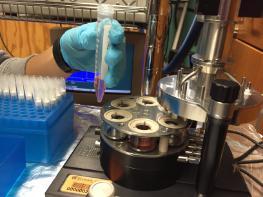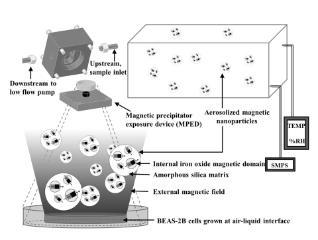PM Health Effect
Health concerns associated with exposure to air pollution are driven by enhanced risk of mortality, reproductive effects, and cardiopulmonary and lung disease. The smaller-sized particles – those 2.5 micrometers or less in diameter, called PM2.5 – are of greatest health concern because they can reach deep inside the lungs. Both primary combustion particulates and SOA are PM2.5 and influence daily base air quality. Primary combustion particulates are recognized as causative agents however increasing attention has been paid to secondary organic aerosol (SOA) produced from atmospheric transformation of hydrocarbons.
What is our laboratory doing?
- Development of in vitro exposure technology
- Electrostatic Precipitator (ESP): ESP system allows for online exposure of cells via direct dispersion of aerosol onto the air-liquid interface. We have been improving the particle delivery to in vitro cell cultures and derived a dose model to assess health effects of particulate matter.
- Magnetic Precipitator: The noble technology using magnetic nanoparticle (MNP) to deliver SOA onto the biological systems has been invented by our laboratory. SOA was directly core-coated on preexisting MNPs, and delivered to a culture membrane implanting in vitro epithelial cells under a magnetic field.
- In vitro studies of SOA: Through collaborative work with pulmonary toxicologists, our lab deliver SOA to the air interface of lung epithelial cells using a novel aerosol delivery system and assess cellular ROS production, viral infectivity, mitochondrial function and lipid composition.
- Development of cell-free detection methods to determine toxicity of particulate matter: We have been studying the reactivity of SOA with amino acids by using cell-free chemical assays and uncover the molecular mechanisms behind the impact of SOA on biological systems at the cellular level in vitro

